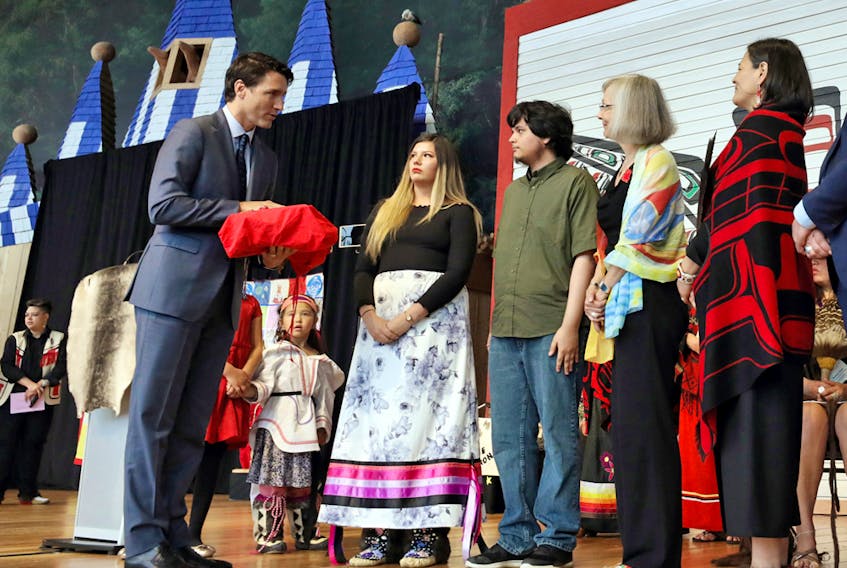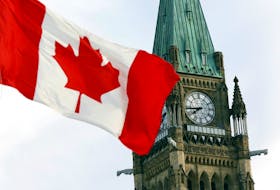OTTAWA, Ont. — Has Canada as a country committed an ongoing genocide against Indigenous women and girls?
This question dominated much of the reaction to the 1,200-page report from the national inquiry into missing and murdered Indigenous women and girls. The report concludes Canada’s actions, both historically and currently, do constitute genocide, and it repeatedly uses the term throughout.
“This report is about deliberate race, identity and gender-based genocide,” says the opening paragraph from Chief commissioner Marion Buller.
But the reaction was skeptical on many fronts. Prime Minister Justin Trudeau did not use the word in his speech at the inquiry’s closing ceremony, despite an audience member calling out to him to do so. Justice Minister David Lametti said the government would leave the question of a genocide up to the “academics and experts.” Roméo Dallaire, the Canadian who led the UN Peacekeeping Mission during the Rwandan genocide, told Quebec media he has a problem with using “genocide” for Canada’s actions in this context.
The inquiry report acknowledges there are large “outstanding disagreements” over what exactly counts as genocide. But to help bolster its position, it issued a 43-page legal analysis of genocide and why it should apply to Canada’s overall treatment of Indigenous people.
The lead author of the analysis is Fannie Lafontaine, holder of the Canada Research Chair on International Criminal Justice and Human Rights at Université Laval. In an interview, she told the National Post she knows calling it a genocide it has no legal force — it would have to be from a judicial tribunal or court for that — but she hopes it helps shape future discussions.
“I was asked to defend (the inquiry’s) position, and to justify it in international law,” Lafontaine said, adding that it agrees with her own position. “It is a legal qualification.”
She said she knows the use of the term will draw comparisons to mass killings such as the Holocaust or the Rwandan genocide, but she argued the true definition of a genocide doesn’t necessarily involve that.
“I think it has to be understood as a very distinct type of genocide from the Holocaust,” she said. “Genocide is composed of lethal and non-lethal acts. All of that together leads to the physical destruction of Indigenous people, but also as a social unit. It’s the genocide taken as numerous acts spanning decades, basically, that is the root cause of the violence against (Indigenous) women.”
In its report, the inquiry points to “colonial structures, evidenced notably by the Indian Act, the Sixties Scoop, residential schools and breaches of human and Indigenous rights, leading directly to the current increased rates of violence, death and suicide in Indigenous populations” as the basis for invoking the term genocide.
The report’s legal analysis is rooted in the definition contained in the 1948 Genocide Convention. It sets out a series of acts done with “intent to destroy, in whole or in part, a national, ethnical, racial or religious group,” and lists as examples killing members of the group, causing serious bodily or mental harm to members of the group, imposing measures intended to prevent births within the group, and forcibly transferring children to another group.
Lafontaine said her legal analysis was based on the standard of whether there is good reason, on a balance of probabilities, to conclude that Canada’s actions as a state constituted genocide. She and other legal experts looked through all of the international case law on genocide.
“If we were to ask the court to do this, such as the International Court of Justice, then it would be: Is there a genocide, and is Canada liable?” she said. “This is a lower standard … It doesn’t mean that it doesn’t indicate genocide, but if you put it on a balance of proof, it can say there are serious reasons to believe (a genocide occurred).”
Despite the fact that it has no binding force, the legal analysis still argues that Canada has broken international law.
“Canada has breached its international obligations through a series of actions and omissions taken as a whole, and this breach will persist as long as genocidal acts continue to occur and destructive policies are maintained,” the analysis says. “Under international law, Canada has a duty to redress the harm it caused and to provide restitution, compensation and satisfaction to Indigenous peoples.”
But it does not appear Canada’s government is going to adopt that legal opinion any time soon.
“We’re going to leave the discussion of the actual use of the term genocide to academics and experts,” said Justice Minister David Lametti on Monday after the report came out. “What we have said today is we have a responsibility to the people, to the families, the survivors and the families of the girls and women who’ve gone missing or been murdered. We have a responsibility of fixing the problem, like the prime minister said.”
Email: [email protected] | Twitter: btaplatt
Copyright Postmedia Network Inc., 2019
READ MORE
- In their own words: Family, survivors and experts from the missing and murdered Indigenous women inquiry
- Calls for justice ‘incumbent on every Canadian’ following missing and murdered Indigenous women report
- FAREED KHAN: No one should be surprised about the 'genocide' declaration of Indigenous women and girls
- JOHN IVISON: MMIW report is devastating, but its uncompromising nature may limit its impact









